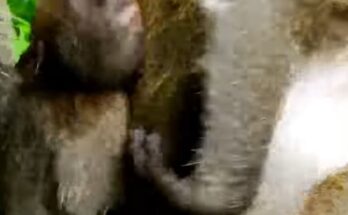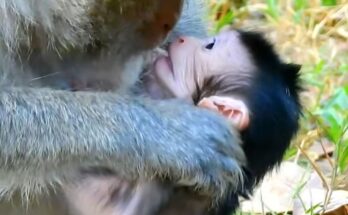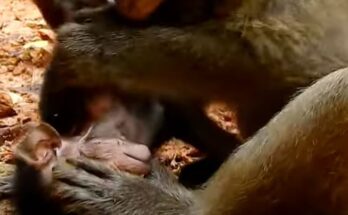Why Mother Monkey Punishes Her Little One So Harshly
The behavior of animals, particularly those in the primate family, often draws curiosity and emotional reactions from humans. One of the more intriguing and, at times, unsettling observations in the wild or in captivity is when a mother monkey punishes her offspring harshly. This behavior may appear cruel to human eyes, but it serves vital purposes in the context of the animal’s environment and survival needs. Understanding the reasons behind such actions helps us gain deeper insights into the natural world and the complex relationships within primate social structures.
The Role of Discipline in the Animal Kingdom
For monkeys, like many animals, discipline is a key aspect of teaching and ensuring survival. While it may seem harsh, the discipline imposed by a mother monkey is rarely about punishment in the way humans understand it. Instead, it’s about training the young to navigate a world filled with potential dangers and social complexities. Young monkeys, like human children, can be impulsive and unaware of the consequences of their actions. A mother monkey’s seemingly harsh response often serves as a lesson to avoid behaviors that could lead to injury, ostracization, or death.
Social Structures and Hierarchies
Monkeys live in social groups with established hierarchies and intricate dynamics. For a young monkey, understanding and adhering to these social rules is critical. A mother may reprimand her offspring harshly if it behaves in a way that threatens the social harmony of the group or challenges higher-ranking individuals prematurely. Such actions are necessary to teach the young monkey how to fit into the group, maintain relationships, and avoid conflict that could endanger its life or its standing within the group.
Teaching Survival Skills
The wild is an unforgiving environment, and survival depends on the ability to learn quickly and efficiently. A mother monkey’s harsh behavior may be a way of teaching her young essential survival skills. For example, if a young monkey wanders too far from safety or fails to heed danger signals, the mother might respond with forceful discipline to instill caution. This method ensures that the lesson is memorable and that the young monkey learns to avoid similar mistakes in the future.
Ensuring Group Safety
In a tightly knit monkey troop, the actions of one member can have repercussions for the entire group. A young monkey’s reckless behavior, such as making loud noises that attract predators or interfering with another mother’s offspring, can put everyone at risk. A mother monkey’s severe reprimand in such situations is not only about protecting her own child but also about ensuring the safety and cohesion of the group. By teaching her young one to behave appropriately, she helps maintain the stability and security of the troop.
Emotional Bonds and Misinterpretation
Humans often project their emotions onto animals, interpreting behaviors through the lens of human relationships. While it might appear that a mother monkey is being unreasonably cruel, it is important to understand that her actions are driven by instinct and necessity rather than malice. In most cases, the bond between a mother monkey and her offspring is strong, and her actions, even if harsh, are motivated by care and the desire to prepare her young for life’s challenges.
Individual Differences in Behavior
It’s also worth noting that not all mother monkeys behave the same way. Just as humans have different parenting styles, individual monkeys may exhibit varying levels of strictness or leniency. Factors such as the mother’s temperament, her past experiences, and the environment in which she lives can influence how she disciplines her young. Observing these differences provides valuable insights into the diversity of primate behavior.
Lessons for Human Understanding
The study of mother-infant interactions among monkeys offers broader lessons about parenting, survival, and socialization. While the dynamics of primate behavior differ from those of humans, there are parallels that can be drawn, particularly in the importance of teaching boundaries, preparing young ones for challenges, and maintaining social harmony.
When witnessing a mother monkey’s seemingly harsh treatment of her young, it’s essential to view it within the context of survival and the complexities of primate societies. What may seem cruel to human sensibilities often has a practical purpose rooted in the instinctive drive to protect, teach, and ensure the continuation of the species. By understanding these behaviors, we not only gain a deeper appreciation for the natural world but also challenge our own assumptions about parenting, discipline, and the diverse ways in which care is expressed.


